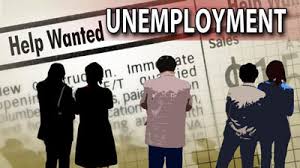
Despite draconian affirmative-action legislation in South Africa, white and Indian youths are still getting more jobs than their black and coloured (mixed-race) counterparts. White and Indian education levels have also increased since 1994 while those of blacks have declined, implying that the education system for blacks under so-called “apartheid” was better than the current hodge-podge of politically correct schooling and left-wing indoctrination at universities.
These facts were announced by the South African government itself, not by any outside agency. The country’s black Statistician General Dr. Pali Lehohla, announced on Monday:
“More coloured and black youth in South Africa are unemployed, involved in crime, and uneducated than other race groups.
“For Indians and whites, the future is very clear. For coloured and black youth, it’s not. It takes twice the effort for a black or coloured child qualified from the same university to be employed,” Lehohla said.
Companies and employers are taking affirmative-action into account when making appointments, knowing that the marks (grades) of coloureds and blacks are artificially boosted by liberal and leftist university professors.
Lehohla also highlighted the fact that many blacks drop out of university, despite record numbers gaining admission.
“The number of blacks and coloured youths that go to university has increased, dramatically so. The problem is that they don’t complete, like their counterparts who are white. They are confronted by a number of challenges.”
White, Indian and Asian youths were also more likely to complete high school than black and coloured pupils. The same goes for university where in some disciplines only 10% of blacks ever finish their degrees.
According to Lehohla, 66% of South Africa’s unemployed was composed of young people, most of whom were black and coloured.
As education correlated with employment, white and Indian youth found it far easier to get employment, despite adverse legislation punishing young whites for “the racism of their parents and grandparents”. However, Indians were actually doing better than whites in some areas as they benefited from similar education levels to whites, as well as affirmative action. Some banks in Johannesburg were rumoured to be employing only Indians and virtually no white youths at all. But outside the big corporate environment, white youths seem to be in demand in SMEs.
Lehohla said two-thirds of those unemployed in South Africa in 2014 were young people. In the age-group 25 to 34, only only one in three people had a job in 2014.
Many white South Africans are emigrating because they believe their children will not find jobs due to the ANC-SACP government’s racist antiwhite policies when it comes to regulating the job market. However, in the real world skills still seem to trump affirmative action and racial social engineering.
Black South African youths fail to get jobs despite race preferences in their favour

